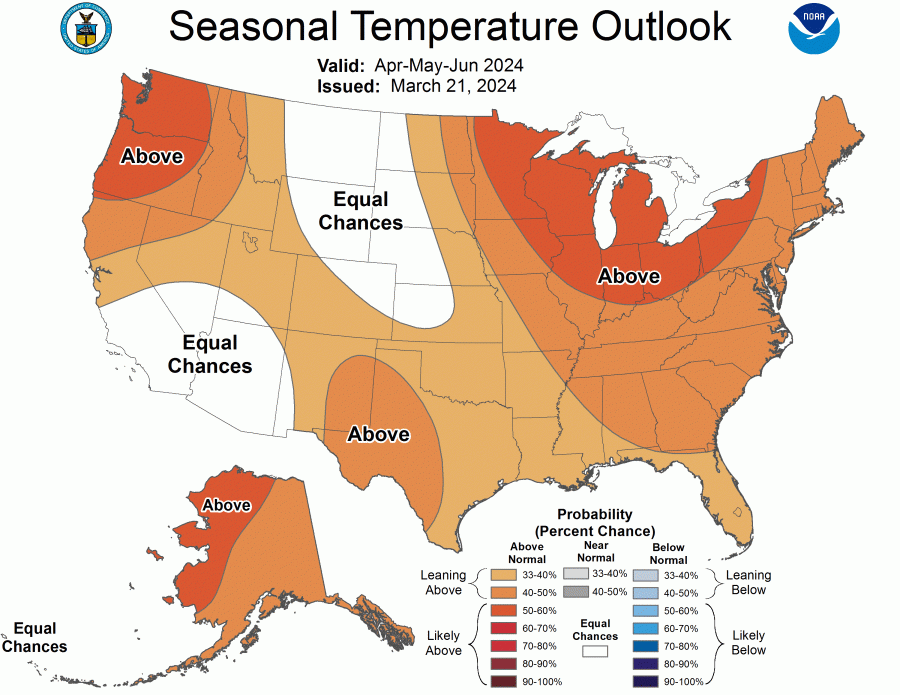Summer coming early? New NOAA forecast map predicts warm 3 months ahead in these states
(NEXSTAR) – Spring has hardly sprung, but summery weather may already be just around the corner. A long-range forecast released by the Climate Prediction Center Thursday shows nearly all U.S. states are leaning toward warmer-than-average weather this spring.
With its three-month outlook, the Climate Prediction Center, which is part of the National Oceanic and Atmospheric Administration (NOAA), is speaking in terms of probabilities – not certainties.
That means Michigan, for example, could absolutely still see a snowy day in April. Oregon could still have weeks that are cold and rainy. However, based on the climate indicators they can observe, national forecasters believe both states have a 50% to 60% chance of having a warm spring season as a whole.
They’re not alone. Most of the country is painted in shades of orange on the map (below). The highest chances of seeing unseasonably warm temperatures are found in the Pacific Northwest, Upper Midwest and Great Lakes.
The darker the shade of orange on the map below, the more likely the area is to see warmer-than-average weather between April and June.

Nearly two dozen states could see their warm weather paired with some extra rain. A large swath of the country, from the Plains to the East Coast and the South, is leaning toward a wetter-than-normal spring, according to NOAA’s predictions.
On the other hand, small slices of the Pacific Northwest and Southwest are more likely to see less rain than usual.

The predicted warm, wet spring comes as El Niño is expected to fade out. Though we’ve been in an El Niño pattern for nine months, NOAA meteorologists foresee it ending sometime between now and June.
Once El Niño ends, we’ll probably be in a “neutral” situation for a short time, before La Niña takes over.
We won’t feel La Niña’s biggest impacts until the fall and winter. A La Niña winter usually means dry, warmer-than-average conditions across the southern half of the country. The Pacific Northwest and Ohio Valley tend to get more precipitation, and northern states can see extra-cold weather.
Copyright 2023 Nexstar Media Inc. All rights reserved. This material may not be published, broadcast, rewritten, or redistributed. Regular the hill posts







